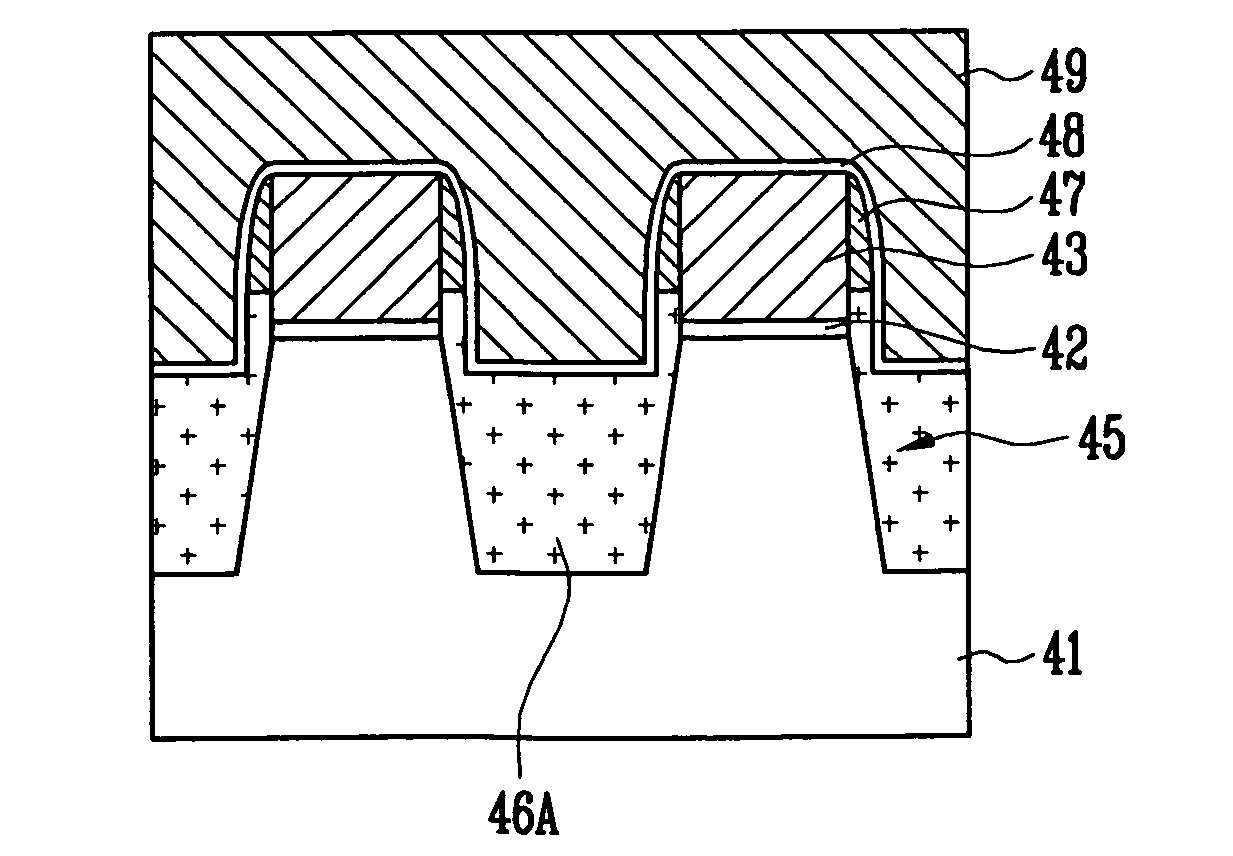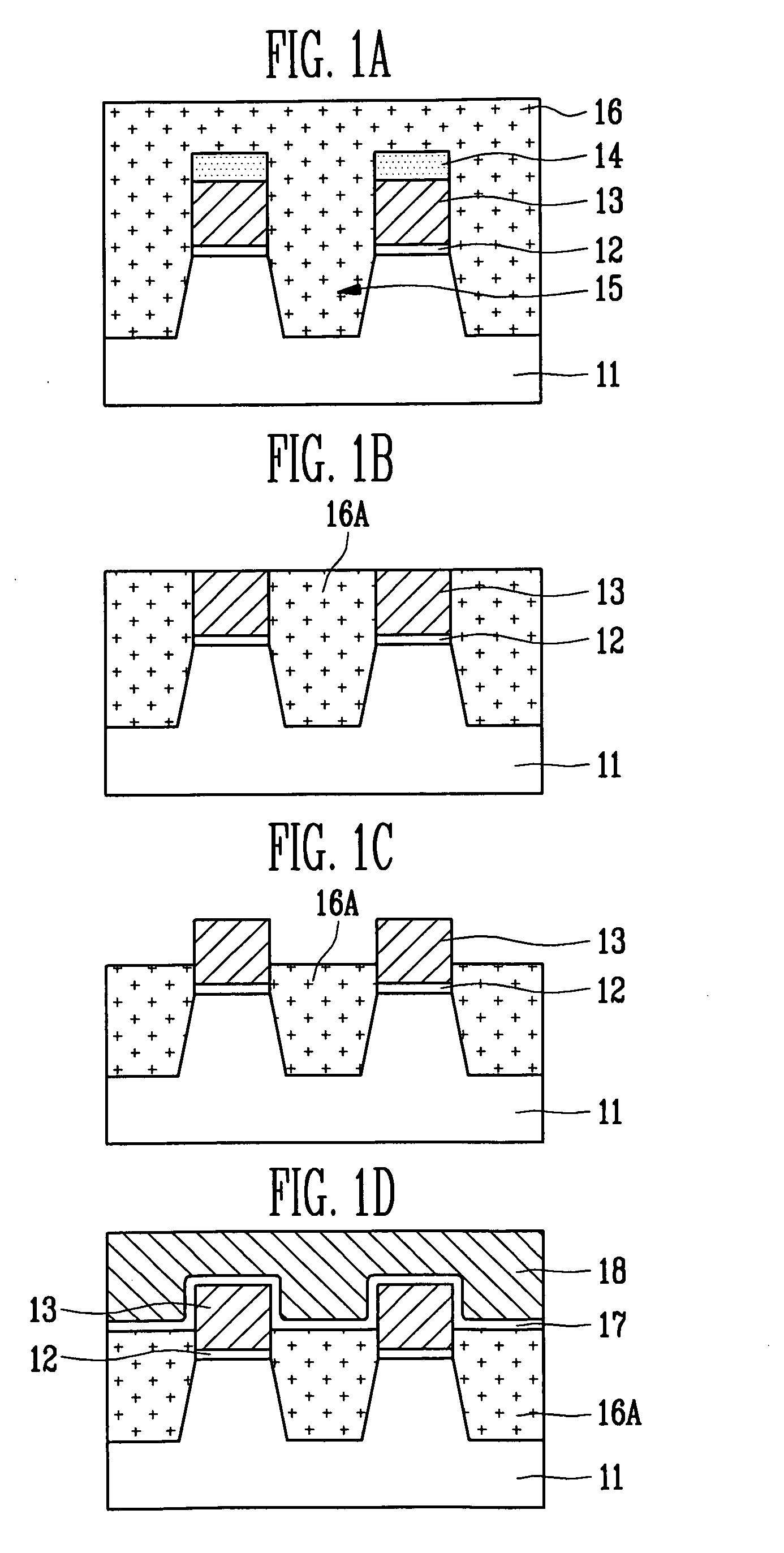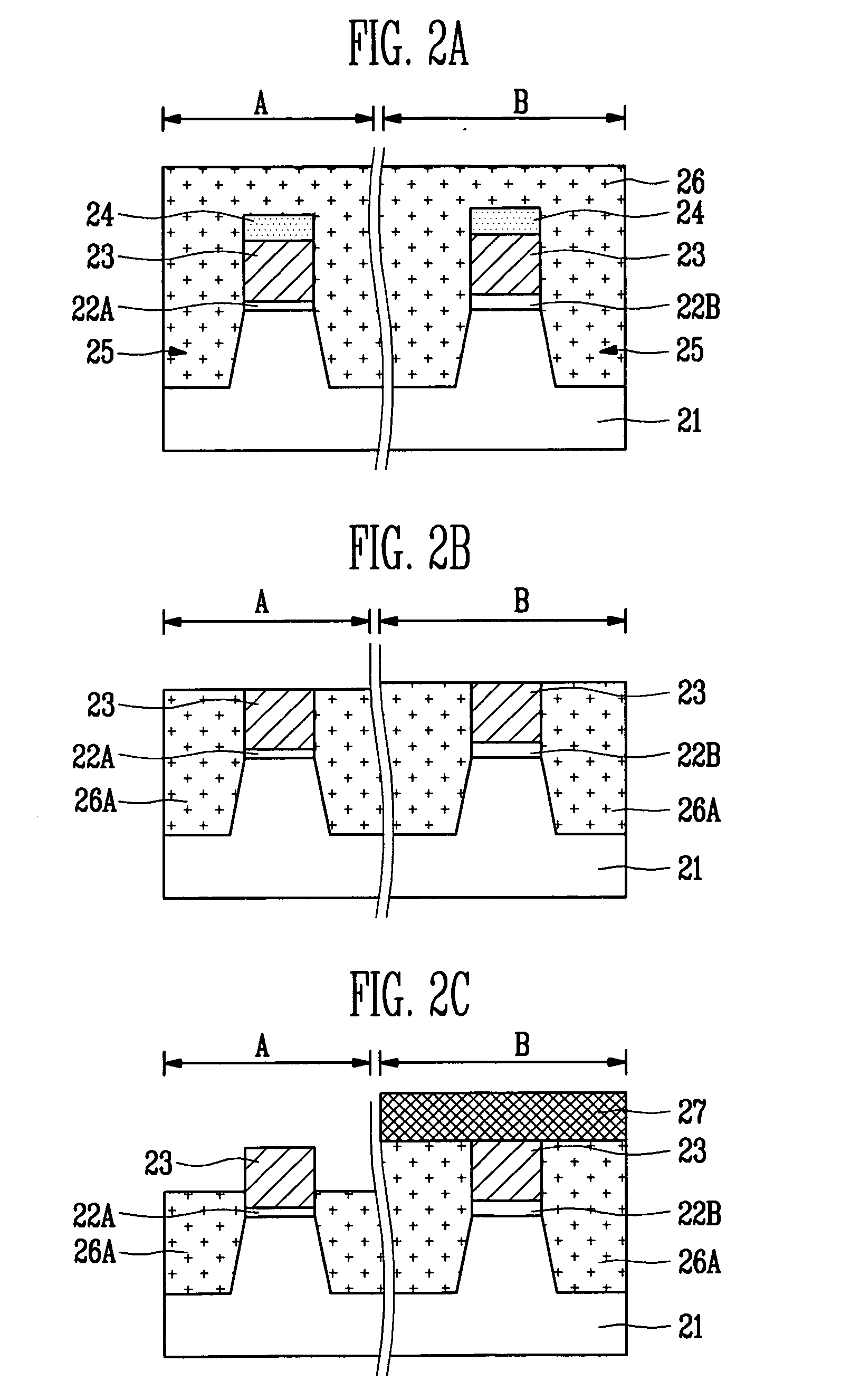Method of manufacturing flash memory device
a technology of flash memory and manufacturing method, which is applied in the direction of semiconductor devices, basic electric elements, electrical appliances, etc., can solve the problems of affecting the integration of semiconductor devices, affecting the stability of the device, and the interference phenomenon between neighboring cells becomes the most important problem, so as to achieve the effect of reducing the interference phenomenon between neighboring cells and increasing the degree of integration
- Summary
- Abstract
- Description
- Claims
- Application Information
AI Technical Summary
Benefits of technology
Problems solved by technology
Method used
Image
Examples
first embodiment
[0032]FIGS. 1A to 1D are cross-sectional views illustrating a method of manufacturing a flash memory device according to the invention.
[0033]Referring to FIG. 1A, a tunnel oxide film 12, a first conductive layer 13, and a hard mask film 14 are sequentially formed on a semiconductor substrate 11. The first conductive layer 13 may preferably be formed to a thickness of 700 Å to 1500 Å by laminating an undoped polysilicon film and a doped polysilicon film in order to prevent warping of the tunnel oxide film 12. The undoped polysilicon film may be formed to have a thickness, which is half or less a total thickness of the first conductive layer 13. Meanwhile, the first conductive layer 13 may preferably be formed to a thickness of 1000 Å to 1500 Å when it is applied to single level cells and may preferably be formed to a thickness of 700 Å to 1000 Å when it is applied to multi-level cells. Furthermore, the hard mask film 14 may be formed using a nitride film.
[0034]The hard mask film 14 i...
second embodiment
[0040]FIGS. 2A to 2E are cross-sectional views illustrating a method of manufacturing a flash memory device according to the invention.
[0041]Referring to FIG. 2A, there is provided a semiconductor substrate 21 in which a cell region A, a high-voltage transistor region B, and the like are defined. A tunnel oxide film 22A is formed on the semiconductor substrate 21 of the cell region A. A gate oxide film 22B having a thickness thicker than that of the tunnel oxide film 22A is formed on the semiconductor substrate 21 of the high-voltage transistor region B. The tunnel oxide film 22A may preferably be formed to a thickness of 70 Å to 90 Å and the gate oxide film 22B may preferably be formed to a thickness of 350 Å to 400 Å.
[0042]A first conductive layer 23 and a hard mask film are formed on the entire structure 24. The first conductive layer 23 may preferably be formed to a thickness of 700 Å to 1400 Å by laminating an undoped polysilicon film and a doped polysilicon film. The undoped p...
third embodiment
[0048]FIGS. 3A to 3E are cross-sectional views illustrating a method of manufacturing a flash memory device according to the invention.
[0049]Referring to FIG. 3A, there is provided a semiconductor substrate 31 in which a cell region A and a high-voltage transistor region B are defined. The semiconductor substrate 31 of the high-voltage transistor region B is etched at a predetermined depth. In this case, the etch depth of the semiconductor substrate 31 is decided taking a thickness of a tunnel oxide film formed in the cell region A and a thickness of a gate oxide film formed in the high-voltage transistor region B into consideration. For example, in the case where the tunnel oxide film is preferably formed to a thickness of 70 Å to 90 Å in the cell region A and the gate oxide film is preferably formed to a thickness of 350 Å to 400 Å in the high-voltage transistor region, the semiconductor substrate 31 may be etched to a depth of 260 Å to 330 Å, for example.
[0050]Referring to FIG. 3...
PUM
 Login to View More
Login to View More Abstract
Description
Claims
Application Information
 Login to View More
Login to View More - R&D
- Intellectual Property
- Life Sciences
- Materials
- Tech Scout
- Unparalleled Data Quality
- Higher Quality Content
- 60% Fewer Hallucinations
Browse by: Latest US Patents, China's latest patents, Technical Efficacy Thesaurus, Application Domain, Technology Topic, Popular Technical Reports.
© 2025 PatSnap. All rights reserved.Legal|Privacy policy|Modern Slavery Act Transparency Statement|Sitemap|About US| Contact US: help@patsnap.com



